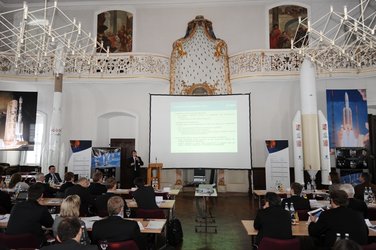Europe prepares new technologies for future launchers
ESA and the DLR German Space Center fired a Texus rocket 263 km into space on 27 November to test a new way of handling propellants on Europe’s future rockets.
Texus 48 lifted off at 10:10 GMT (11:10 CET) from the Esrange Space Centre near Kiruna in northern Sweden on its 13-minute flight.
During the six minutes of weightlessness – mimicking the different stages of a full spaceflight – two new devices were tested for handling super-cold liquid hydrogen and oxygen propellants and then recovered for analysis.
Building on over 30 years of Texus missions, flight 48 was the first to demonstrate a new technology for future launchers.
DLR procured the rocket for this flight, which was performed under ESA’s Cryogenic Upper Stage Technologies (CUST) project as part of the Future Launchers Preparatory Programme (FLPP).
Improved upper stage

ESA is working on a restartable cryogenic upper stage to improve Europe’s launchers.
Liquids naturally float around in weightlessness but to ensure engine ignition after a long coast in low-gravity, propellant must be held ready at the tank’s outlet using ‘capillary’ forces – the same force that helps paper towels soak up water.
Although this has already been mastered for launchers and satellites that use storable liquids, higher-performance cryogenic fluids are more difficult to handle.
On Texus 48, liquid nitrogen represented the cryogenic propellants to ease cost and safety constraints, and simplify the thermal design.

“The launch of Texus 48 demonstrating new technologies for future rockets was a success. It also shows great cooperation with DLR, where joint efforts made this flight possible on time,” said Guy Pilchen, Future Launchers Preparatory Programme Manager.















 Germany
Germany
 Austria
Austria
 Belgium
Belgium
 Denmark
Denmark
 Spain
Spain
 Estonia
Estonia
 Finland
Finland
 France
France
 Greece
Greece
 Hungary
Hungary
 Ireland
Ireland
 Italy
Italy
 Luxembourg
Luxembourg
 Norway
Norway
 The Netherlands
The Netherlands
 Poland
Poland
 Portugal
Portugal
 Czechia
Czechia
 Romania
Romania
 United Kingdom
United Kingdom
 Slovenia
Slovenia
 Sweden
Sweden
 Switzerland
Switzerland





























